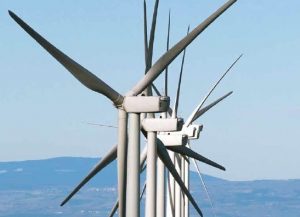As part of continuing scientific research on understanding wind resources, the U.S. Department of Energy’s National Renewable Energy Laboratory (NREL) and Second Wind, Inc., have announced a partnership to characterize the performance of Second Wind’s Triton™ sonic wind profiler. Under a Cooperative Research and Development Agreement (CRADA), NREL and Second Wind will conduct research correlating the Triton measurements with measurements gathered from a meteorological tower and will later include Triton measurements in the development of a new Wind Instrument Characterization System (WICS) at the National Wind Technology Center (NWTC) near Boulder, Colorado.
Second Wind develops resource assessment technology for the global wind industry (see related article in this issue). Triton is an advanced, portable sodar (sonic detection and ranging) system that bounces sound waves off the atmosphere and analyzes characteristics of the return signal to calculate wind speed and direction up to 200 meters high. Replacing a 60- or 80-meter meteorological tower and providing much more data, the Triton is changing the way the wind industry does site assessments.
NREL and Second Wind will analyze data gathered from a Triton sonic wind profiler and a nearby meteorological tower during a six-month correlation study completed in 2008-2009. The analysis, expected to be completed in the near term, will characterize the measurement performance of Triton. Next, a Triton will be deployed at the NWTC to collect long-term measurements and compare them to wind resource data being collected from NWTC tall towers.
As part of the CRADA, measurements from the Triton will also be included in the development of a new Wind Instrument Characterization System (WICS) at NWTC. This research will lead to improvements in wind resource assessment and more accurate project energy estimates. “This CRADA will give NREL additional experience with the latest tools being used by the industry for wind measurement,” says Dennis Elliott, principal scientist in wind resource assessment at NREL. “This research is vital as the industry moves towards requiring hub height and higher data to reduce uncertainty in the wind resource and turbine performance.”
“We are excited to be collaborating with NREL on this project, as it is a great opportunity to work with internationally respected wind experts,” says Walter Sass, CEO of Second Wind. “We are looking forward to working with NREL on an in-depth review of the Triton technology performance, and to making a contribution to NREL’s scientific research on wind instrument characterization.”
For more information go to www.secondwind.com and www.nrel.gov.

























